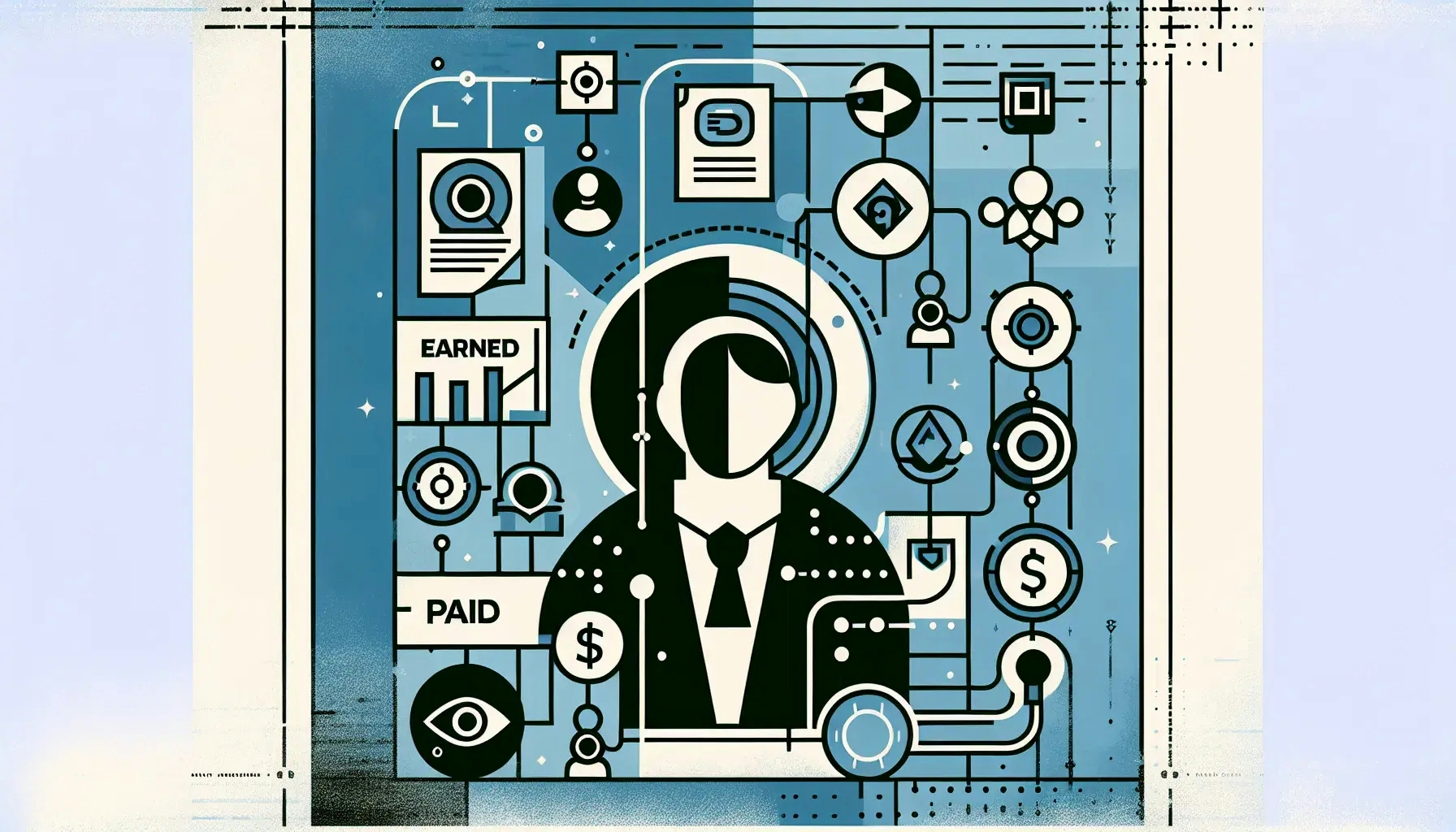Welcome to a comprehensive exploration of the differences between earned and paid media. This blog post will delve into the nuances of these two essential components of marketing strategy. We'll dissect their definitions, benefits, drawbacks, and the strategies to maximize their potential. By the end of this post, you'll have a clear understanding of how these two types of media can work in harmony to boost your brand's visibility and credibility.
Defining Earned and Paid Media
Let's start by defining these two types of media. Earned media refers to publicity gained through promotional efforts other than paid advertising. It includes mentions in news outlets, word of mouth, and content picked up by third-party sites. In contrast, paid media involves paying to place promotional content directly. This includes advertisements on television, radio, print media, and digital platforms.
Earned media is often seen as more authentic and credible because it comes from independent sources. It's the digital equivalent of personal recommendations. When a reputable news outlet or a trusted influencer mentions your brand, it lends credibility and boosts your brand's image.
On the other hand, paid media gives you more control over your message. You decide where and when your ad appears, who sees it, and what it says. This control allows you to target your audience more precisely, ensuring that your message reaches the right people at the right time.
The Advantages of Earned Media
Earned media offers several advantages. It's cost-effective, as it doesn't require a direct monetary investment. Instead, it requires investment in high-quality content, customer service, and public relations. When your brand earns media coverage, it's because people consider your content valuable enough to share.
Another advantage is credibility. People tend to trust recommendations from friends, family, and influencers more than advertisements. When your brand is mentioned by a trusted source, it enhances your reputation and builds trust with your audience.
However, earned media is not without its challenges. It requires a significant investment in time and effort to create content that resonates with your audience and catches the attention of influencers and news outlets. It also requires patience, as the results are not immediate.
The Power of Paid Media
Paid media, on the other hand, offers immediate results. Once you launch a paid campaign, your content is immediately visible to your target audience. This immediacy is particularly useful for time-sensitive promotions or when launching a new product.
Paid media also offers precise targeting. You can choose exactly who sees your ads based on demographics, interests, and behavior. This precision ensures that your ads reach the most relevant audience, increasing the likelihood of conversion.
However, paid media also has its drawbacks. It requires a significant financial investment. Also, while it offers immediate visibility, it does not guarantee engagement or conversion. People are increasingly skeptical of ads, and many use ad blockers.
Balancing Earned and Paid Media
The key to a successful marketing strategy is balancing earned and paid media. Each has its strengths and weaknesses, and using them in tandem can help you maximize your reach and impact.
Start by creating high-quality content that resonates with your audience. This content can earn media coverage and also serve as the basis for your paid campaigns. Use the precision targeting of paid media to ensure that your content reaches the right audience.
Monitor the performance of your campaigns and adjust as necessary. If a piece of content is performing well organically, consider boosting it with a paid campaign. If a paid campaign is not generating the expected results, review your targeting parameters or the content itself.
Measuring Success
Regardless of the type of media, measuring success is crucial. For earned media, track mentions of your brand, backlinks to your content, and engagement on social media. For paid media, track impressions, clicks, and conversions.
Remember, the goal is not just to reach a large audience, but to engage them and inspire them to take action. Therefore, don't just focus on the quantity of your reach, but also on the quality. Are you reaching the right audience? Are they engaging with your content? Are they taking the desired action?
The Future of Earned and Paid Media
As the digital landscape continues to evolve, so too will the roles of earned and paid media. Advances in technology are making paid media more precise and personalized, while the growing importance of authenticity and trust in brand relationships is increasing the value of earned media.
To stay ahead, brands must continue to adapt their strategies. This includes staying abreast of changes in consumer behavior and technology, investing in high-quality content, and maintaining a strong brand image. Regardless of the changes, the principles of successful marketing remain the same: understand your audience, deliver value, and build trust.
Wrapping Up: Earned vs. Paid Media
In conclusion, both earned and paid media play vital roles in a comprehensive marketing strategy. Earned media builds trust and enhances your brand image, while paid media offers control and immediate visibility. By understanding the strengths and weaknesses of each, you can create a balanced strategy that maximizes your reach and impact. Remember, the goal is not just to reach a large audience, but to engage them and inspire them to take action.

